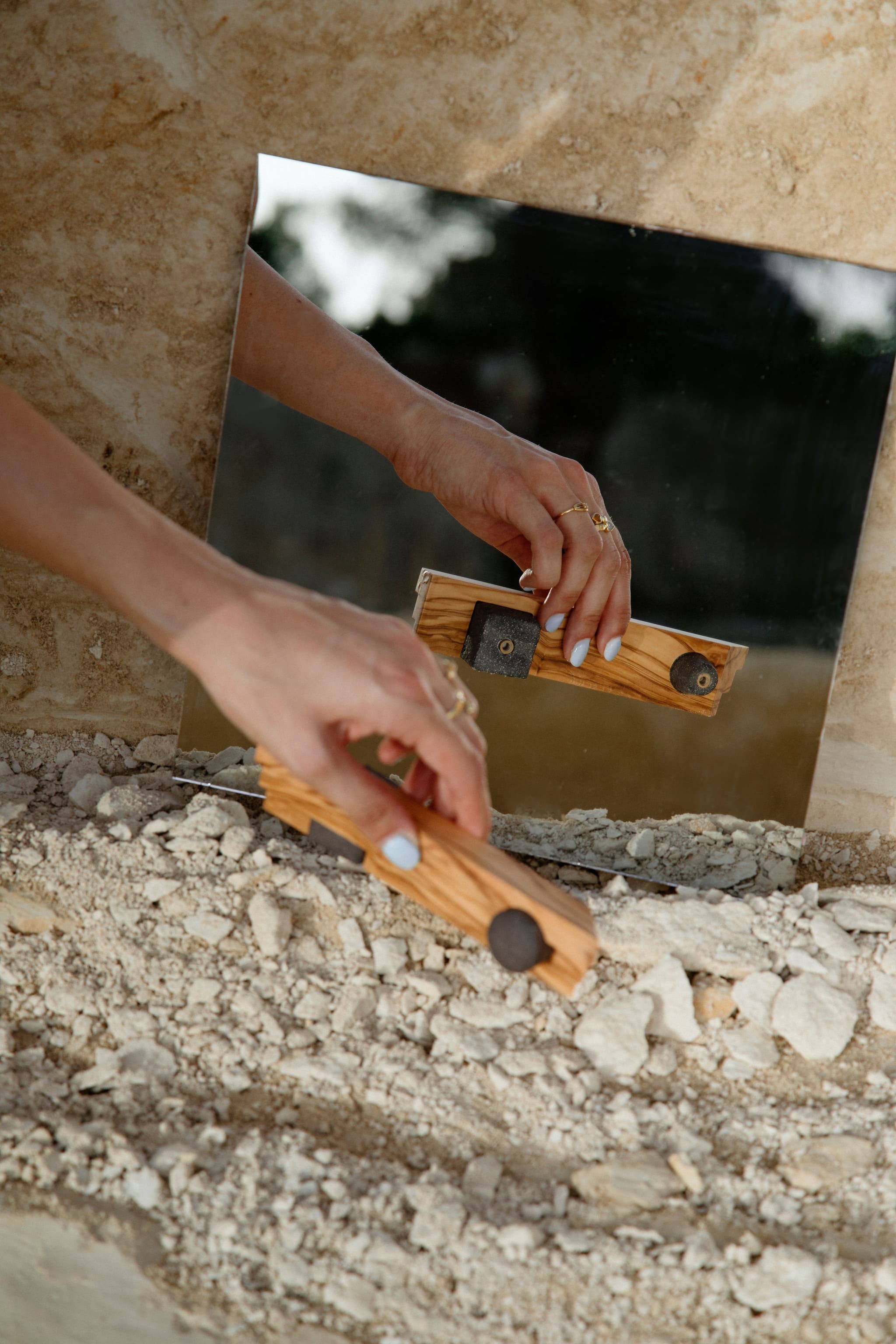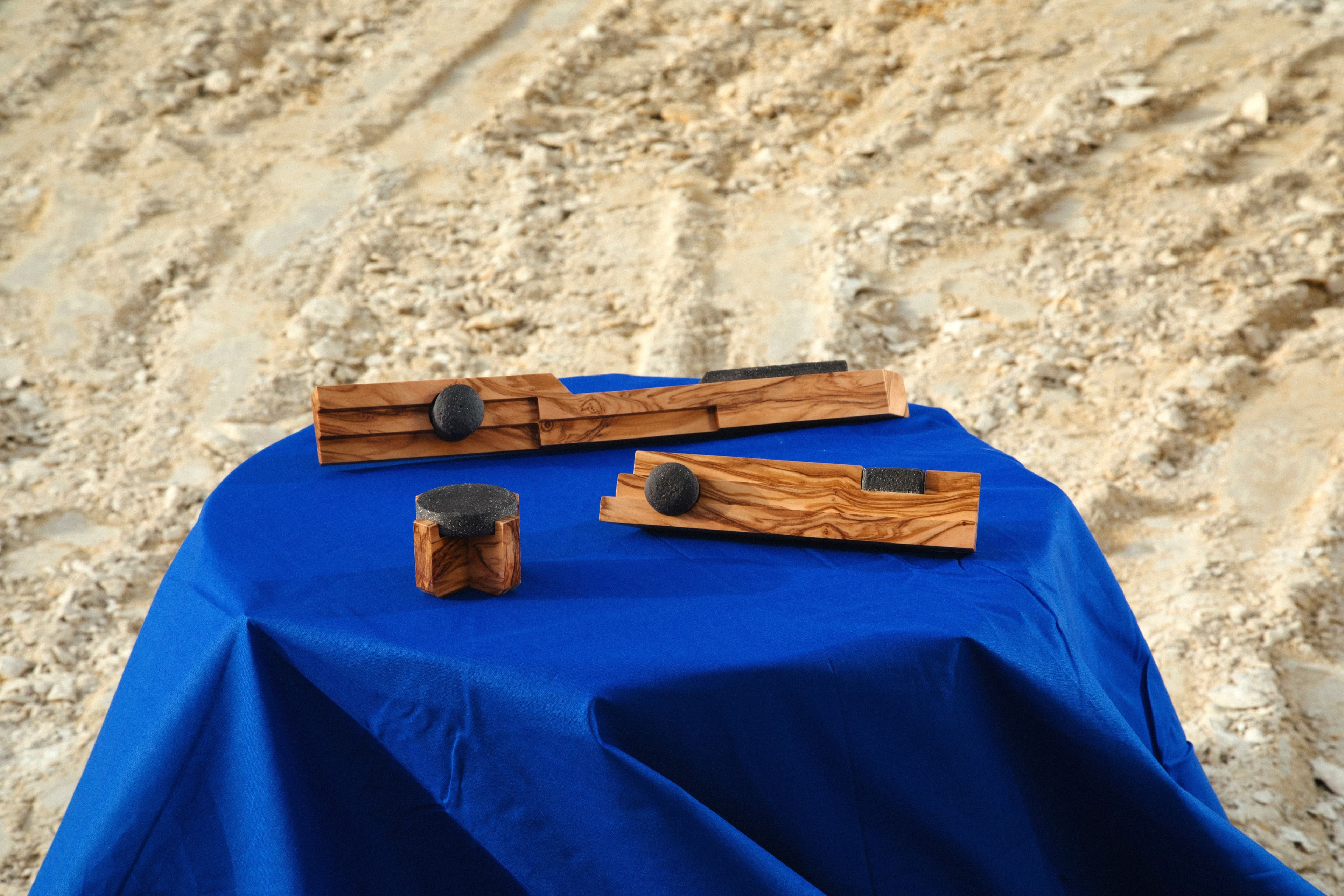How does the cultural backdrop of Puglia influence your design philosophy and outputs?
We bring a unique perspective rooted in local experiences rather than the hustle and bustle of big cities. Our background in familiar, close-knit communities sharpens our attention to detail, and ensures a personalised approach to each project, which is evident in the quality and specificity of our output. In this sense, artisans are involved in supporting our work, technical support that comes from a direct relationship with people in the area.

What inspired the concept of your Fragment furniture handles capsule collection?
When reflecting on sustainability, we combined the recycling of olive wood affected by the xylella bacteria, the eventual reuse of old furniture and the design of a piece of furniture that we tend to focus less on. We were inspired by the style and poetics of the master Carlo Scarpa, bringing his architecture back into our microarchitecture.

Can you elaborate on the process of upcycling olive wood and ceramics for the handles?
The regional law for the protection and enhancement of olive wood has become a reality, so it is now a priority to establish centres for the collection, seasoning and storage of wood. The processing of this material is delicate as the wood is very hard, but thanks to CNC machines it is possible to achieve a precise result. The ceramic, on the other hand, is a local material provided by the artist with whom we collaborate at km 0.

How do numerically controlled machines contribute to the precision and sustainability of your designs?
CNC machines were necessary to reproduce the complex shapes of our capsule collection, and also to achieve a precise result, and have minimal material waste by speeding up production.
Can you describe the design considerations that went into positioning the screws in the back of the ceramic parts? What challenges did you face when combining machine precision with handcrafted ceramics?
The position of the screws was carefully studied to establish the right spacing and thus an ergonomic grip for the handles. We referred to standard dimensions to allow the replacement of handles already on the market.
It was a decision based on the fact that this was a prototype. For the initial processing stage, we created handmade pieces that will be replicated and refined for the final mold. The ceramist will then work on the wooden handle to establish the precise measurements of the elements.

How do you envision the role of small design elements, like furniture handles, in transforming and rejuvenating interior spaces?
The handle is the practical example of the philosophy of the initial concept: with a “small” element one can enhance or change the aesthetics of a piece of furniture or a room by intervening in the details.
How do you see Studio Sospeso evolving in the next five years?
In the next few years, we imagine having our own "Spazio Sospeso", a physical place where we can work, welcome other professionals, and create new collaborations throughout Italy and abroad with a strongly rooted identity. We would also like to be able to work much more in the world of Retail Design.








